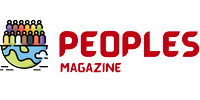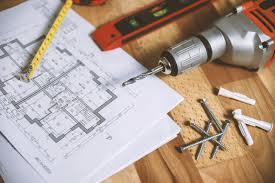DIY home improvement projects have become increasingly popular, allowing homeowners to personalize their living spaces while saving on costs. However, amidst the excitement of upgrading your home, it’s crucial to be well-informed about the intersection of DIY endeavors and insurance coverage.
DIY Home Improvement Trends
In recent years, DIY trends have evolved beyond simple repairs to more complex projects, such as kitchen renovations and smart home installations. These trends can significantly impact the insurance needs of homeowners, necessitating a closer look at policy details.
Common DIY Home Improvement Projects
From painting walls to installing new flooring or revamping the backyard, DIY projects vary in scope and complexity. Each project comes with its set of potential risks, making it essential for homeowners to understand how these endeavors can affect their insurance coverage.
Painting Projects
Painting is a common DIY task, but accidental spills or damage to property may not always be covered by standard insurance. Homeowners should be aware of the specifics regarding paint-related incidents.
Flooring Upgrades
Upgrading flooring is a popular DIY choice, but issues such as improper installation leading to accidents may pose insurance challenges. Homeowners should consider additional coverage for potential liabilities.
Landscaping Ventures
Enhancing your outdoor space through landscaping can elevate curb appeal. However, accidental damage to neighboring properties or injuries due to landscaping features may not be covered by standard policies.
Risks Associated with DIY Projects
While the sense of accomplishment in completing a DIY project is rewarding, it’s crucial to recognize potential risks. Property damage, personal injuries, or even third-party liabilities can arise during these projects, underscoring the importance of comprehensive insurance coverage.
Types of Insurance Relevant to DIY
Understanding the different types of insurance relevant to DIY projects is paramount. Homeowners insurance typically covers property damage and liability, but additional considerations are necessary for those engaging in DIY endeavors.
Homeowners Insurance Coverage
Homeowners insurance is the primary safeguard, but it’s essential to review policy terms. Certain DIY projects may require endorsements or additional coverage to ensure full protection.
Special Considerations for DIY Projects
Some insurance providers offer policies tailored for DIY enthusiasts, recognizing the unique risks associated with hands-on home improvement. Exploring these specialized options can provide comprehensive coverage for DIY-related incidents.
DIY and Home Insurance Policy Coverage Gaps
Despite having homeowners insurance, there can be gaps in coverage when it comes to DIY projects. Policyholders must be aware of these gaps and take proactive steps to fill them, ensuring adequate protection during and after a project.
Tips for Ensuring Adequate Coverage
To navigate the complexities of insurance and DIY projects, homeowners should adhere to certain guidelines. Communicating openly with insurance providers, documenting project details, and understanding policy limitations are key steps to ensure coverage aligns with the project’s scope.
Case Studies
Real-life examples illustrate the potential insurance implications of DIY projects. These cases underscore the importance of proper planning, safety measures, and comprehensive insurance coverage tailored to specific projects.
Selecting the Right Insurance Provider
Choosing the right insurance provider is crucial for homeowners engaging in DIY activities. Factors such as responsiveness, coverage options, and understanding of DIY-related risks should influence this decision.
DIY Safety Measures
Safety should always be a priority in DIY projects. Beyond personal well-being, adhering to safety measures can positively impact insurance rates, reflecting a homeowner’s commitment to risk mitigation.
DIY and Property Value
As DIY projects enhance property value, homeowners should inform their insurance providers of improvements. This ensures that coverage aligns with the increased value of the property.
Insurance Premiums and DIY Efforts
Homeowners may wonder if their insurance premiums will rise due to DIY projects. While some increases are possible, taking preventive measures and maintaining safety standards can help minimize these adjustments.
Legal Implications of DIY Projects
Before embarking on a DIY journey, homeowners should familiarize themselves with local regulations. Ignoring legal considerations can lead to fines or insurance complications.
DIY and Home Appraisal
DIY projects can influence home appraisals, affecting the overall value of the property. Homeowners should consider the insurance implications of an appraised value and make necessary adjustments to their coverage.
Conclusion
In the dynamic world of DIY home improvement, being informed about insurance implications is as vital as choosing the right paint color or flooring. Homeowners should approach DIY projects with a clear understanding of potential risks, proper insurance coverage, and a commitment to safety.
Frequently Asked Questions (FAQs)
- Does homeowners insurance cover all DIY projects?
While homeowners insurance provides general coverage, some DIY projects may require additional endorsements for full protection.
- Can DIY projects impact my insurance premiums?
Yes, certain projects may lead to increased premiums. However, maintaining safety measures can help minimize these adjustments.
- Are there insurance providers specializing in DIY coverage?
Some insurers offer specialized coverage for DIY enthusiasts, recognizing the unique risks associated with hands-on home improvement.
- What legal considerations should I keep in mind for DIY projects?
Before starting a DIY project, be aware of local regulations to avoid legal complications and potential insurance issues.
- How can I ensure my DIY improvements are reflected in my property’s insurance coverage?
Inform your insurance provider of any significant DIY enhancements to ensure that your coverage aligns with the increased value of your property.

